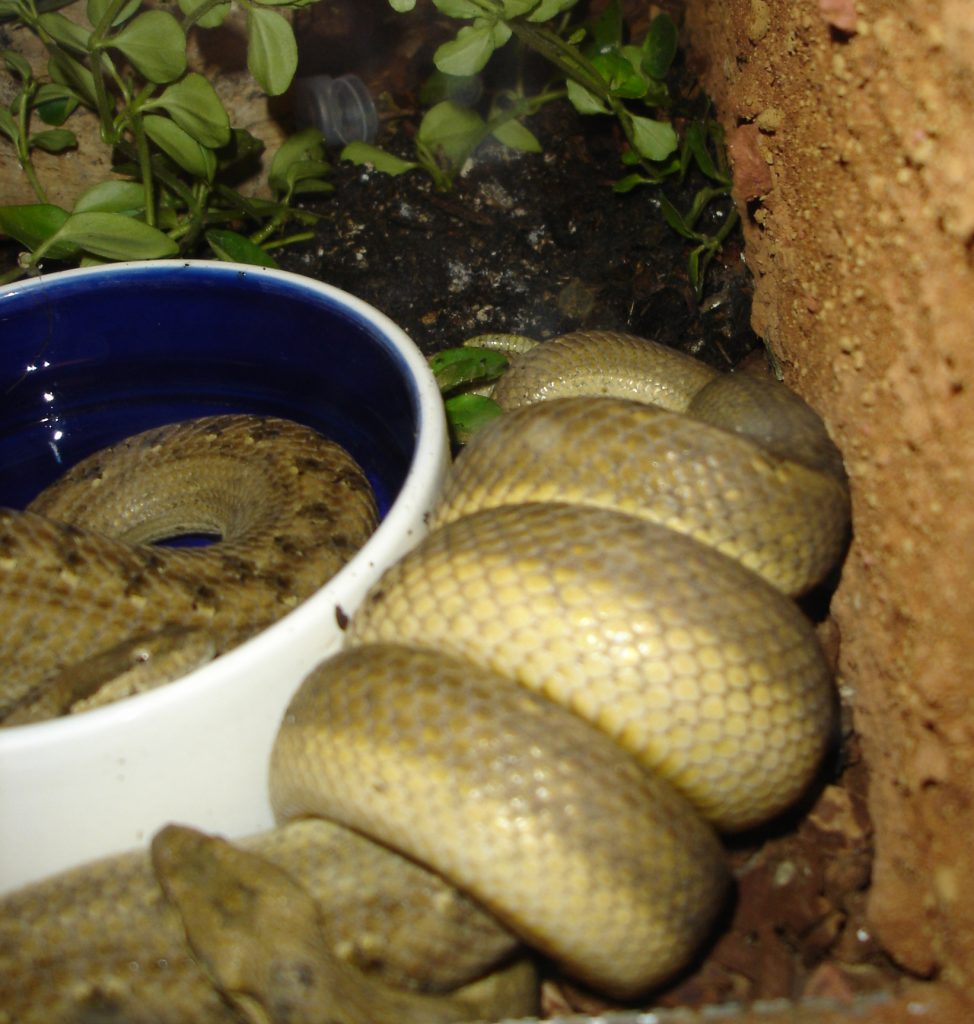The Genus Tropidophis was long considered to be a member of the Boa Superfamily, due to morphological similarities with this group. This view is also also reflected in their common name: Dwarf Boas. However, the positioning of these snakes within the boidae has been a matter of debate. See e.g.
Molecular research suggested that the lineages of Tropidophis and the superfamily booidea diverged early in evolutionary history and that therefore no close relationship between these groups exists .
This view was corroborated by recent research using more molecular markers and more sophisticated tools for analysis Consequently, the Family Tropidophiidae was errected, unassigned to any snake superfamily due to its uncertain phylogenetic relationships to other families.
The family Tropidophiine contains 33 members of the Genus Tropidophis as well as the two members of the Genus Trachyboa. All Tropidophiine snakes are new world species, occurring in Mexico, the West Indies to southeastern Brasil. The family displays its greatest diversification on the West Indies.The recent work of Zheng and Wiens unraveled in great detail the time of divergence and shows that the lineage had its last common ancestor with most other recent snake families (including boas, pythons, viperids and colubrids) about 92.7 Million years ago. Thus the Tropidophiidae family is on an individual evolutionary trajectory for a very long time, surpassed only by the Families: Anomalepididae (124.7 Million years of separation (MYS)), Leptotyphlopidae (122 MYS) . Despite the fact that these snakes phylogenetically don’t belong to the boas any longer, we still find them fascinating and maintain a few. If everything goes to plan, there will be a few more this season (see picture)

The Tropidophis melanurus male did not lose any time after being introduced on the evening of Feb 3. to his female friend. After a few minutes, we were able to see the mating.